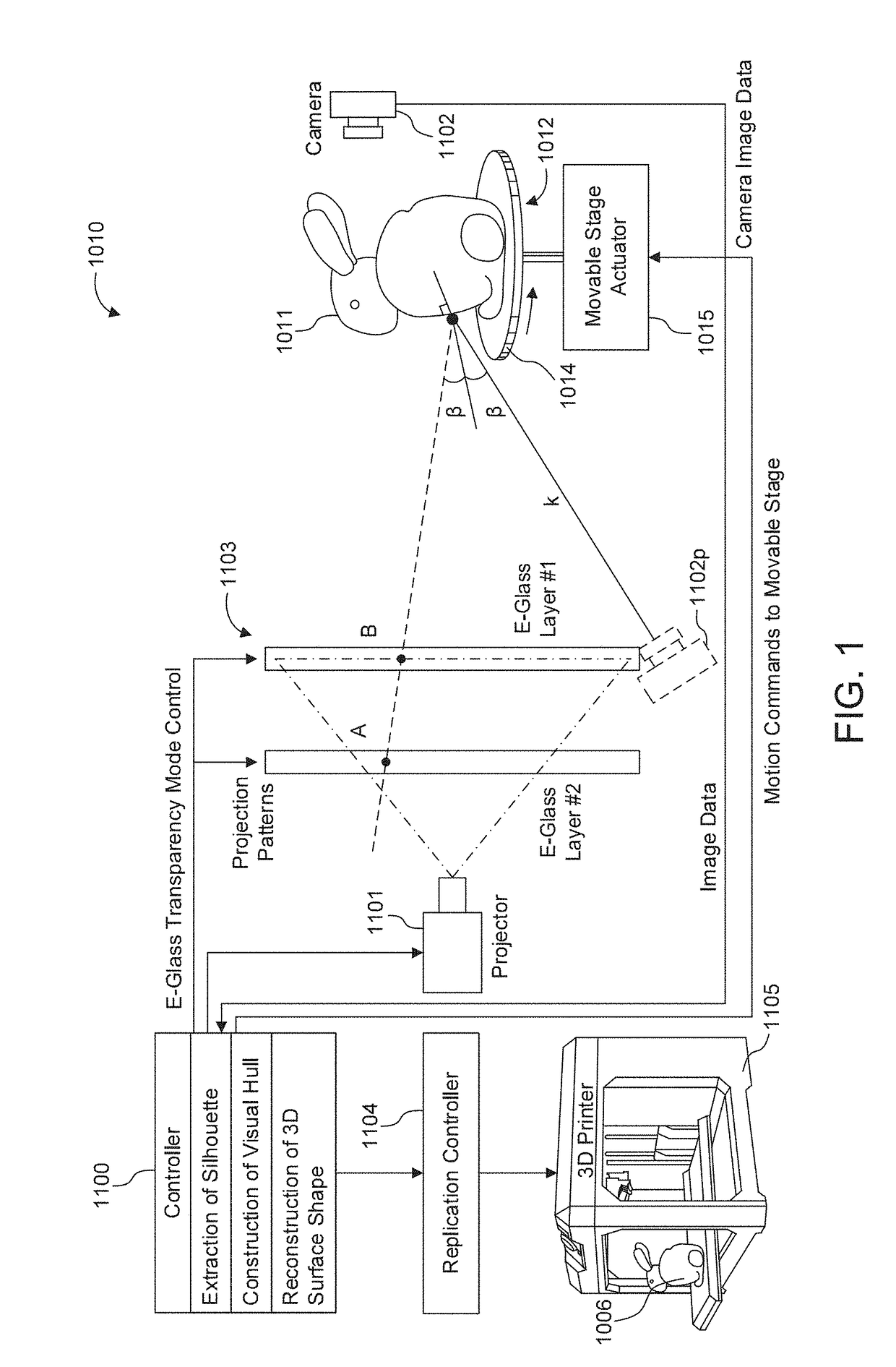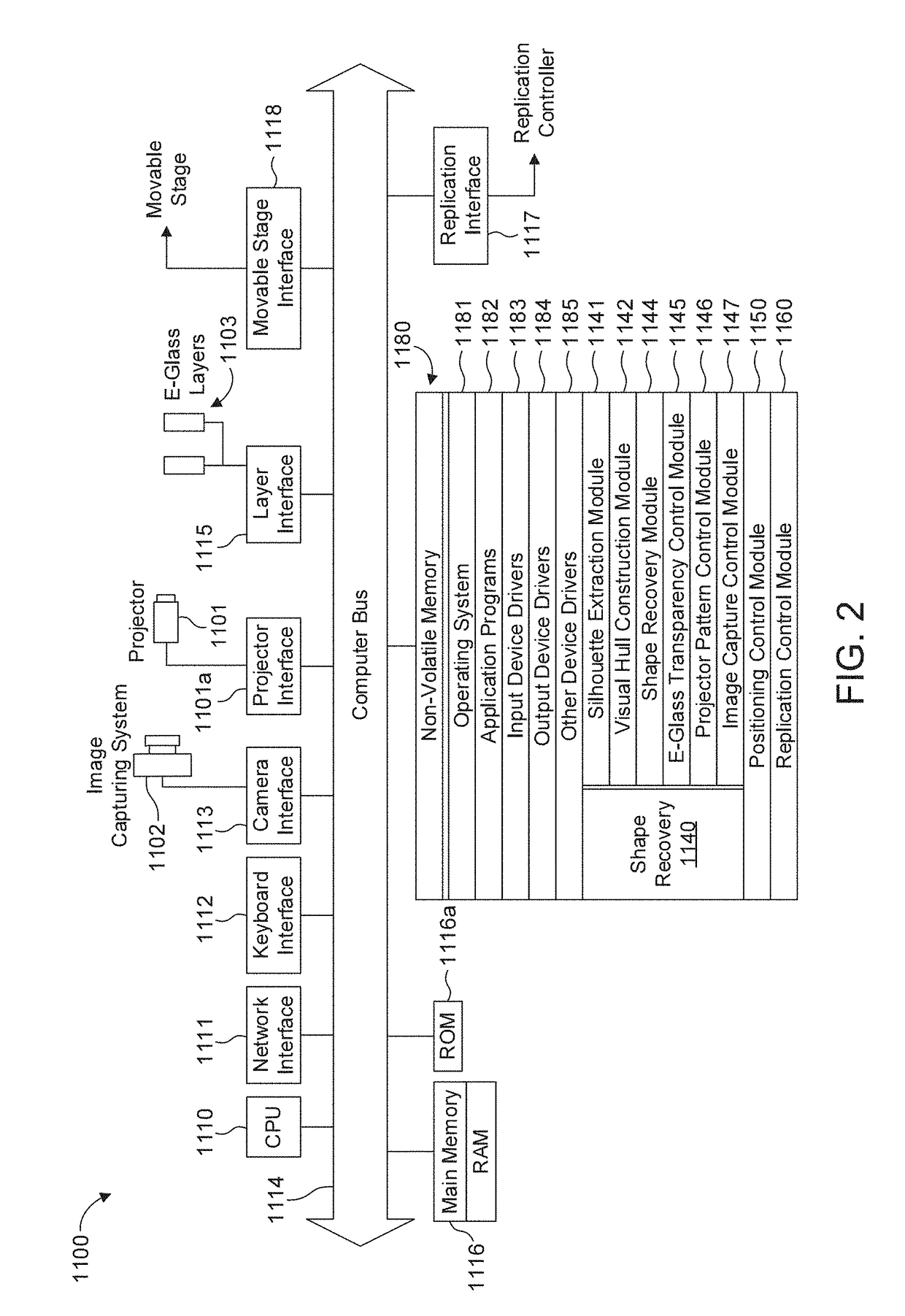Shape reconstruction using electronic light diffusing layers (e-glass)
a technology of electronic light diffusing layers and shape reconstruction, applied in the field of silhouette extraction and shape reconstruction of physical objects, can solve the problems of difficult 3d reconstruction of a specular object, difficult reflection by the object, and open problem of 3d reconstruction of an object with a specular surface (or non-lambertian surface), and achieve the effect of accurate silhouette extraction
- Summary
- Abstract
- Description
- Claims
- Application Information
AI Technical Summary
Benefits of technology
Problems solved by technology
Method used
Image
Examples
case 1
[0155] Object with diffuse surface (FIG. 8B): When a light ray hits this type of object, its intensity is reflected in many directions and might never hit the diffuse screen, creating a shadow. In this case, the spot B is dark.
case 2
[0156] Object with specular surface (FIG. 8C): When a light ray hits a specular surface, its intensity is entirely reflected in one direction which depends on the normal of the object's surface at the intersection point. The light does not reach the diffuse screen, and in this case the spot B is dark.
case 3
[0157] Transparent object (FIG. 8D): When a light ray hits a transparent object, its intensity is partially reflected (this part will never reach the diffuse screen) and partially goes through the object following a deflected path. The light ray rB might eventually hit the screen but at a point B′ instead of B, and with an intensity which is usually lower than the original intensity.
[0158]FIGS. 9A, 9B, 9A and 9B show examples of this case 3, for transparent objects. These figures show examples of shadows of two different but fully transparent objects when the projector projects flat light and a pattern consisting of vertical stripes. In FIGS. 9A and 9B, the object is a pyramid at two different orientations (here, rotation orientations). Likewise, in FIGS. 10A and 10B, the object is a cube at two different orientations (rotations). It can be observed in these figures that the vertically-striped pattern is deformed by the transparent object due to the deflected light rays.
Reconstructi...
PUM
| Property | Measurement | Unit |
|---|---|---|
| size | aaaaa | aaaaa |
| transparency | aaaaa | aaaaa |
| transparent | aaaaa | aaaaa |
Abstract
Description
Claims
Application Information
 Login to View More
Login to View More - R&D
- Intellectual Property
- Life Sciences
- Materials
- Tech Scout
- Unparalleled Data Quality
- Higher Quality Content
- 60% Fewer Hallucinations
Browse by: Latest US Patents, China's latest patents, Technical Efficacy Thesaurus, Application Domain, Technology Topic, Popular Technical Reports.
© 2025 PatSnap. All rights reserved.Legal|Privacy policy|Modern Slavery Act Transparency Statement|Sitemap|About US| Contact US: help@patsnap.com



